This video is available on Rumble, Bitchute, Odysee, Telegram, and X.
New data suggest that fewer Americans say they are transexuals. I hope that’s true, and I hope that one reason is that fewer young white girls feel compelled to escape from the cis-white-oppressor category by claiming to be trans and therefore victims themselves. But before I get into that, here are some data.
This recent article about transgender identity cites the Household Pulse Survey that asked 18- to 22-year-olds whether they call themselves male, female, or transgender.
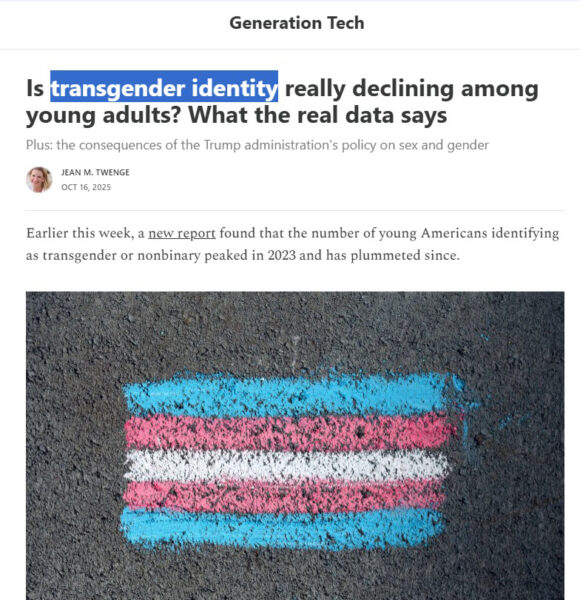
Here is the percentage that said “transgender,” with a peak in the first half of 2024 and a sharp drop in the second half.
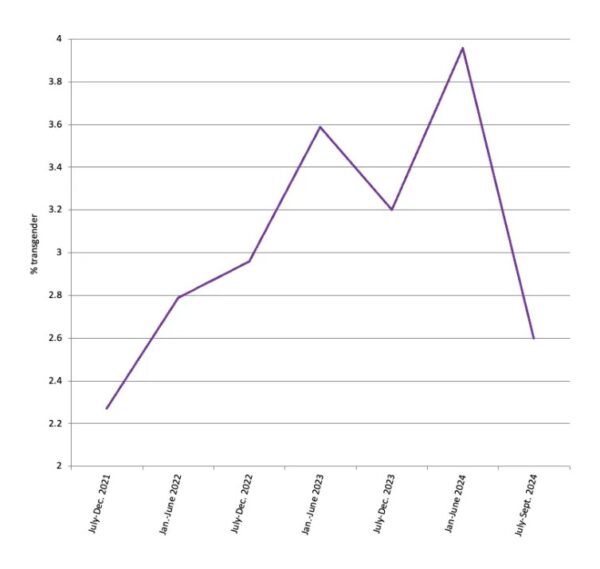
The author of the article reports that surveys so far in 2025 no longer ask whether people think they are transgender. The Household Survey is government funded, and the Trump administration says there are only two sexes, and doesn’t let you say you’re trans. That’s too bad. I’d like to know how many people think they are the wrong sex.
Other data that hint at a decline in trans identity are in this report by Eric Kaufmann called “The Decline of Trans and Queer Identity among Young Americans.”
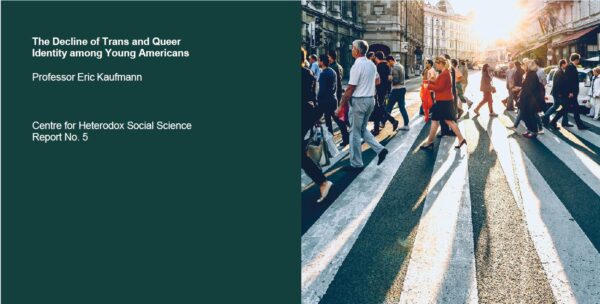
This graph is of the percentage of certain groups that don’t call themselves male or female.
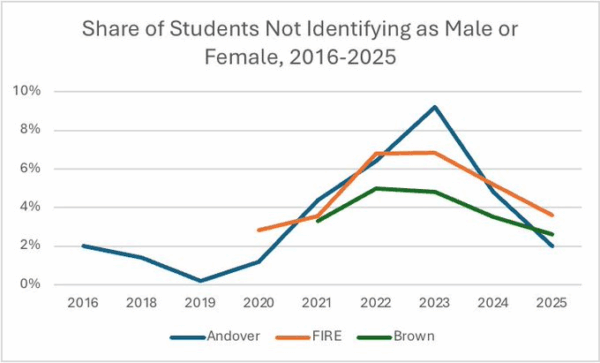
That percentage peaked in 2023 and is fortunately coming down. And we have data for 2025. But these are small samples: an annual survey of about 1,000 students at the Andover prep school and the freshman class at Brown University. FIRE is Foundation for Individual Rights and Expression, and samples around 50,000 students. But the trouble with these numbers is that you can be trans, claim you are one sex or another, and not show up as aberrant at all.
This sheds some light. Here is how Andover students describe themselves.
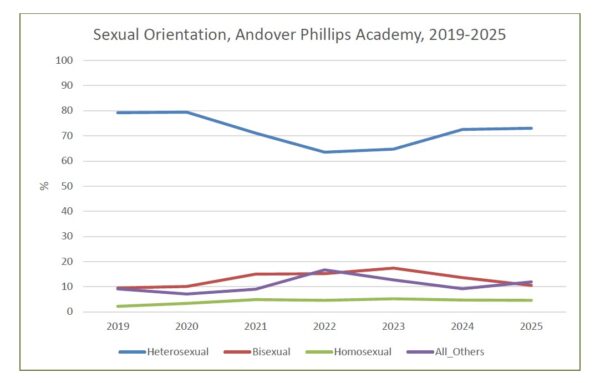
The blue line at the top is heterosexual, a clear majority. The red is bisexual, purple is “all others,” and the green at the bottom is homosexual. Heterosexuals took a sharp dip from 2020 to 2022, but are making a comeback. People who think they are the wrong sex are presumably among the purple “all others,” and although that group is down from its 2022 high, it crept up from 2024 to 2025. Maybe trans is less popular; maybe not.
Here is a similar graph for Brown.
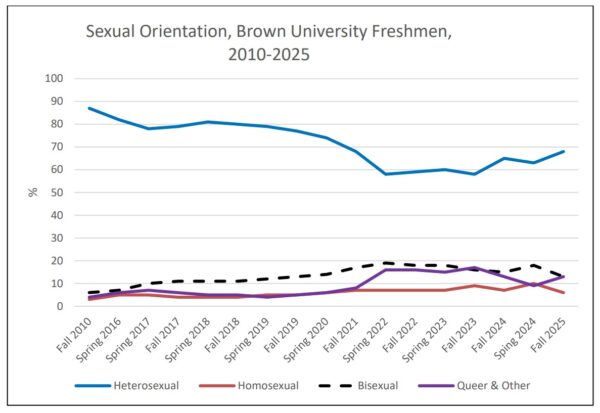
The top line, heterosexual, also took a drop into 2022, but is coming back. The purple line, “Queer & Other,” which would presumably include transexuals, is down from its high, but rose in the fall of 2025. Again, inconclusive. The Kaufmann report says that the percentage of students calling themselves trans has dropped from 7 percent to 4 percent since 2023, but I don’t think the data are that clear.
The trans craze hit young white women hardest. In fact, you can see it as one of the most horrifying consequences of the anti-white insanity that has swept the West.
This City Journal article from 2022 called “The Assault on Children’s Psyches” is one of the most infuriating articles you will ever read. Its subtitle is “California’s ethnic-studies curriculum is fueling a mental-health crisis among teenagers.”
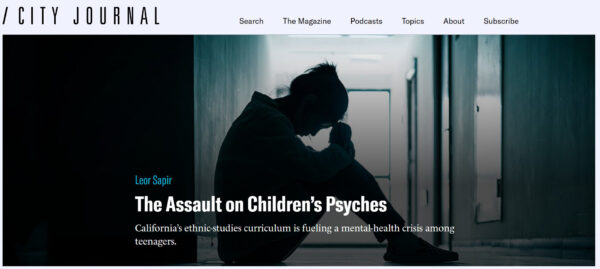
Manhattan Institute Fellow Leor Sapir writes that young white women from liberal families are perfect sponges, and soak up the message of white guilt.

“Being white is not something these teenagers can escape, but they can mitigate its social costs by declaring themselves part of an oppressed group.” “Plagued by guilt, the children — almost all of them girls — rush to the sanctuary of ‘LGBTQ+’ identity. Once there, they are catapulted into hero status.” They are also sucked into a system that encourages them to “transition.” Mr. Sapir concludes: “California’s teen girls are seeking refuge in puberty blockers, testosterone injections, and double mastectomies, while their parents are almost powerless to stop them.”
Mr. Sapir based this article on conversations with distressed parents who set up support groups. I don’t know how common this nightmare is, but if even only one young white woman has mutilated herself in the hope of escaping whiteness, it’s an outrage.
Here is an AI representation of trends in transexual identification over the last 15 years.
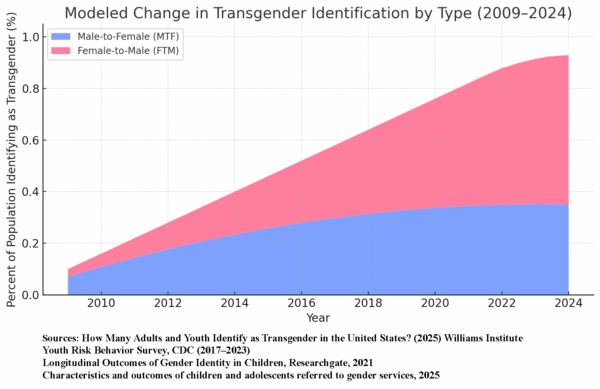
There are no good data for 2025, and I hope there has been a decline. Blue, at the bottom, is men who think they are women, and red is women who think they are men. As you can see, back before the craze, the problem was mostly men thinking they were women. If these data are correct, from about 2020, the trend for men leveled off. The problem is young women thinking they are men.
According to a UCLA study, young blacks, Hispanics, and Asians are less likely than young whites to say they are trans.
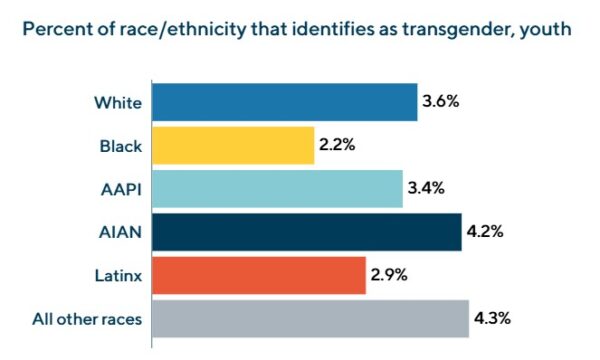
However, AIAN—that’s American Indians and Eskimos—are more likely. Each group may have different reasons, but it’s interesting that young blacks—who according to all surveys have the highest self-esteem of any group—are least likely to say they are trans.
Trans is a dangerous, artificial fad. It encourages young people with mental problems to do things that make their problems worse. There have been high-profile mass shootings by trans or trans-related people that show how deeply disturbed some of them are, and let us hope this will dampen the encouragement the media, schools, and society offer them.

The AP reported last year that “England is limiting gender transitions for youths.”
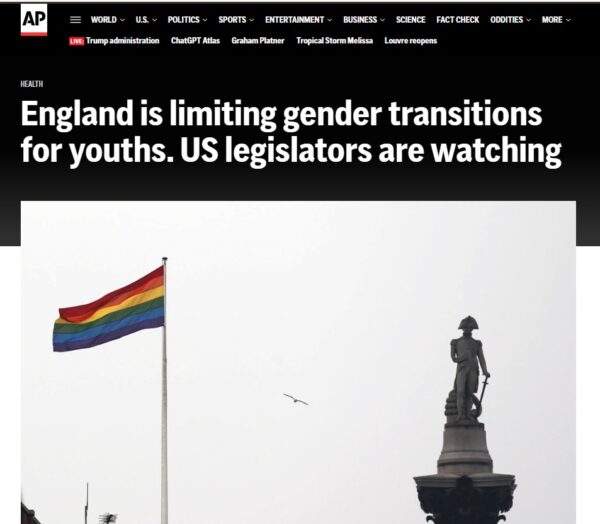
Some US states have also started cutting back.
Young white women appear to be especially tempted by transgenderism as an escape “oppressor” status. Nothing would do these women more good than to understand that their race is a source of joy, not shame.

Let’s hope that as more whites shake off this insane guilt, we can leave this horror behind.
The post Has the White Trans Plague Peaked? appeared first on American Renaissance.
American Renaissance





 T1
T1


